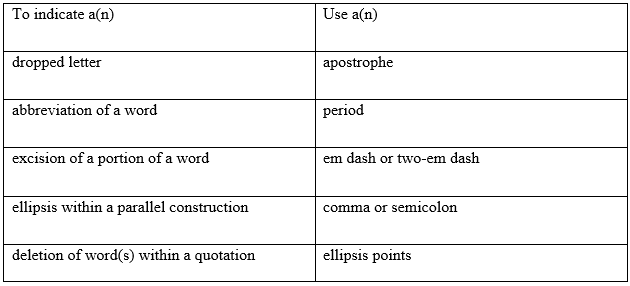- Services
- Discovery & Intelligence Services
- Publication Support Services
- Sample Work

Publication Support Service
- Editing & Translation
Editing and Translation Services
- Sample Work

Editing and Translation Service
- Research Services
- Sample Work

Research Services
- Physician Writing
- Sample Work

Physician Writing Service
- Statistical Analyses
- Sample Work

Statistical Analyses
- Data Collection
- AI and ML Services
- Research Impact
- Sample Work

Research Impact
- Medical & Scientific Communication
- Medico Legal Services
- Educational Content
- Industries
- Subjects
- About Us
- Academy
- Insights
- Get in Touch

- Services
- Discovery & Intelligence Services
- Publication Support Services
- Sample Work

Publication Support Service
- Editing & Translation
Editing and Translation Services
- Sample Work

Editing and Translation Service
- Research Services
- Sample Work

Research Services
- Physician Writing
- Sample Work

Physician Writing Service
- Statistical Analyses
- Sample Work

Statistical Analyses
- Data Collection
- AI and ML Services
- Research Impact
- Sample Work

Research Impact
- Medical & Scientific Communication
- Medico Legal Services
- Educational Content
- Industries
- Subjects
- About Us
- Academy
- Insights
- Get in Touch

Indicating Omission
The fourth and most important purpose of punctuation is to indicate the absence of a letter, portions of a word, a complete word, or a phrase:
Copyeditors face a few technical issues when using an apostrophe to signify a contraction (can’t) or a dropped letter (rock ‘n’ roll): ensure that the character is an apostrophe and that the apostrophe properties are in the correct location. Contractions, on the other hand, present a stylistic problem. Some publishers and authors assert that contractions have no place in official writing (perhaps except “aren’t I,” because “am I not” sounds artificial), but many publishers have abandoned or relaxed the prohibition. So be careful to inquire about house rules with your editorial supervisor. If your author’s tastes align with house policy, consult your editing supervisor before making significant adjustments; publishers will frequently waive house rules on such mechanical issues.
Attention must be paid to the punctuation of elliptical formulations (structures in which one or more words are comprehended but not repeated). In straightforward sentences, a semicolon suffices:
- He was born and reared in Iowa City, while she was raised in Manitowoc.
- Semicolons are preferred in complicated circular constructions:
- Since 1995, 350 acres of valley oak have been restored along the Grand River’s south bank and 250 acres along the north bank.
MARK-BY-MARK PITFALLS
In addition to these primary functions, punctuation serves several conventional objectives; many are covered in other sections of our proofreading services. This section will look at the most frequent applications and misuses of the more difficult punctuation mark, the comma, semicolon, colon, hyphen, em dash, and en dash.
COMMAS: THE COPYEDITOR’S NEMESIS
The previous talk discusses many of the more perilous comma hazards. See Chicago or WIT for a complete list of comma regulations. The essential principles and conventions are summarized and explored further below.
- Compound sentence (two separate sentences linked by conjunction)
- Compound premise (one topic rules over two verbs).
- The dependent sentence following an independent clause
- Introductory statement with a participle
SEMICOLONS
The semicolon’s dual nature confuses when it comes to its use: A semicolon can sometimes be used as a weak period, joining independent sentences together more tightly than a period would. However, a semicolon can also work as a strong comma, separating syntactical components more firmly than a comma.
COLONS
As previously demonstrated, colons can combine two independent clauses into one sentence or add a list to an independent clause. Most of the issues stem from the second function, but the guideline is simple: When appending an index to an independent clause, use a colon; do not use a colon if the words preceding the list do not make a separate sentence.
HYPHEN
A soft hyphen is a hyphen that occurs at the end of a line of text to show that a word continues on the following line. The term “soft” alludes to the fact that the hyphen must vanish if the complete phrase is written on one line. The syllabication of the word and different line-break rules control the location of a soft hyphen; for example, it is wrong to strand a single letter of a comment at the end or beginning of a line of text.
EM DASHES
The formal word for what most people call “a dash” is em dash. Typists and word processors frequently write an em dash as two hyphens (–), but the em dash shows as one character (—) in typeset text. Hard copy copyeditors do not need to label em dashes reliably typed as either — or —. On-screen copyeditors may be told to substitute the em-dash symbol with two hyphens or a defined code to satisfy typesetting system standards. There is no word space before or after an em comma by tradition.
EN DASHES
The en dash, which does not show on a conventional typewriter keyboard, is the oddball in this collection. You’ve probably seen many en slashes in the paper, but you may not have given them much thought. For example, an en dash is lengthier than a comma but shorter than an em dash in print.

Give yourself the academic edge today
Each order includes
- On-time delivery or your money back
- A fully qualified writer in your subject
- In-depth proofreading by our Quality Control Team
- 100% confidentiality, the work is never re-sold or published
- Standard 7-day amendment period
- A paper written to the standard ordered
- A detailed plagiarism report
- A comprehensive quality report


